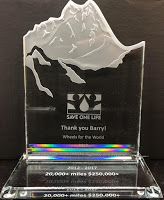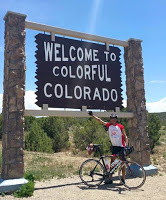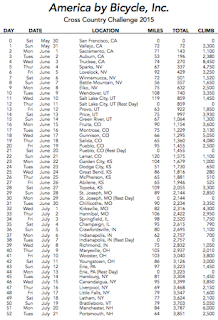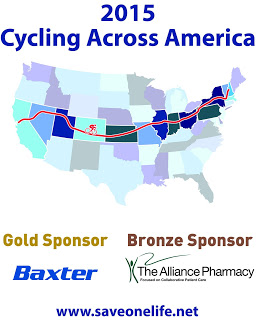Remembering the Rain: Barry Haarde
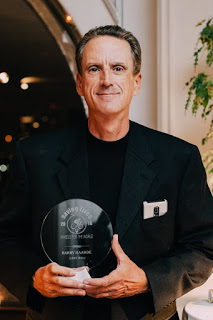 I don’t know if this was ever published anywhere, but my dear, late friend Barry Haarde sent this to me shortly after we met. It expressed to me the depths of his soul, his feelings, compassion, caring. And his pain. Barry loved jazz and played it professionally; he said it was considered one of the highest forms of music. He was an incredibly intelligent man with a heart of gold and a sensitive, spiritual soul. And he as apparently an excellent writer. This essay is about love, our community, pain and longing. Read it and think of Barry. The title comes from a beautiful song by jazz player Bill Evans; on a CD that Barry gave me as a gift. https://www.youtube.com/watch?v=9l7qd3jTNu4
I don’t know if this was ever published anywhere, but my dear, late friend Barry Haarde sent this to me shortly after we met. It expressed to me the depths of his soul, his feelings, compassion, caring. And his pain. Barry loved jazz and played it professionally; he said it was considered one of the highest forms of music. He was an incredibly intelligent man with a heart of gold and a sensitive, spiritual soul. And he as apparently an excellent writer. This essay is about love, our community, pain and longing. Read it and think of Barry. The title comes from a beautiful song by jazz player Bill Evans; on a CD that Barry gave me as a gift. https://www.youtube.com/watch?v=9l7qd3jTNu4lives.”
-F. Scott Fitzgerald
“Why do you ignore me?” asked the pretty girl
with the lustrous black hair and the dark and wounded eyes-eyes that had
captured my imagination from the very first time she’d greeted me and sweetly asked
me my name. “I know something must have happened to you,” she said. “Why won’t
you talk to me?”
of 1990 and I had met someone special. She loved to dance and sing and had
aspirations of a career in the theatre. We’d met while performing in a musical
production together. I played the trombone from the relative seclusion and
anonymity afforded by the orchestra “pit”, while she practiced her craft under
the bright lights of center-stage. She was everything that I was not;
unabashedly extroverted and brimming with the passions of youth and the hopeful
expectations of what she dreamed her life would become.
her questions. How could I tell her that I had been recently diagnosed with
HIV, a dreaded disease that was rapidly spreading and killing hundreds of
thousands around the globe, creating an unstoppable wave of hysterical fear,
panic, and prejudice in its wake. I was already having a bad time of it in the
summer of ’90. My brother-in-law had just succumbed to a long and arduous
battle with AIDS, which he’d contracted from the same blood products I had used
to control bleeding caused by hemophilia. We were told the medications were
safe…they weren’t.
Pat’s memorial service. Friends and
family gathered in the usual way as they inevitably do at such times.
Condolences were offered and pleasantries exchanged. Most of those in attendance
were aware that they were attending the funeral of an AIDS victim, but the word
“AIDS” was carefully and meticulously skirted, as if a diaphanous veil of tacit
silence had descended over the whole affair. I sat next to my brother John;
also a hemophiliac and also HIV positive. My brother was very strong and I had
never seen him cry. I silently wondered if the same thought occupied his mind;
which of us would be the next to die? The answer came seventeen years later,
when John lost his battle with hepatitis C, that “other” virus with which we’d
also been infected. His HIV status was never mentioned at his funeral either. I
had personally insisted on it.
year that Ryan White died. I had watched for several years as the story of the White
family was told and retold in the mass media. Ryan’s life symbolized the plight
of many AIDS victims at the time. He was denied the right to attend school and
forced to move from his neighborhood after someone fired a bullet into the
window of the White family’s home. Audiences around the globe watched his story
unfold in front of the seemingly endless numbers of reporters who took up
residence on the street where Ryan lived, hoping to catch a glimpse of the new
“poster boy for AIDS.” Ryan’s remarkable bravery and his long struggle with hemophilia
and AIDS ended with his death on April 8th of that unbearable year.
White’s life was highly publicized and often sensationalized in the media, his
story was by no means unique. I’d seen other stories in the news, like that of
the Ray family, whose home was firebombed and burned to the ground by
belligerent neighbors, simply because they feared the three young Ray brothers
who were hemophiliacs living with AIDS. They didn’t want them in their schools.
of a young man named Robbie, who lived in rural Kentucky. Robbie had been born
with hemophilia, but he was good in school and had dreams of becoming a minister.
When his HIV status was exposed, Robbie received threats. People in their town
said they were going to “string him up from the nearest tree”. Robbie and his
mother moved in the dead of night to another town, only to encounter prejudice
and bigotry once again, including from the pastor of his new church, who
demanded that Robbie hang a sign around his neck disclosing his HIV status to
others. Robbie had unknowingly infected his fiancée with HIV. She died of AIDS
at the age of 21. Robbie never became a minister. He became ill with
complications from AIDS. Alone, except for his mother, who was then dying of
cancer, he ended his life by means of a fatal gunshot to the head.
the object of my youthful affections that my life was composed of such
stories-a life of experiences I felt certain she could never understand. How
could I explain the fate that had befallen so many in the hemophilia community,
many of whom were merely children. How could I tell her that I lived with the
same disease that had silenced the lives of thousands of others and that had
propelled many of those lives into a reality often defined by secrecy and quiet
desperation. To these, life had come
quickly and gone, leaving not bitterness, but pity; not disillusion but only
pain.
never did. Years later, I tried to locate her, but to no avail. I wanted to
explain it you see-to make it right, to make some sense of it somehow. I am left now with only memories; a memory of
something hoped for-something that might have been, but wasn’t-the memory of a love,
once discovered and lost, never to be relived again- and a memory of the day we
said goodbye.
you,” I whispered, as I embraced her for the last time and bid her farewell.
“You don’t love me,” she said dispassionately as she turned and walked away.
Our paths had parted now and I was certain we would not meet again. The skies
began to darken and a weary stillness settled in the air. I lingered for a
moment beneath the sprawling Oak tree which had shaded us as we’d sat and
talked one day while exchanging expectant glances into one-another’s eyes. A
sudden gust of wind claimed the last of its withering leaves; casualties of the
inevitable arrival of winter. Absent now were the familiar Mockingbirds that no
longer gathered and sang from amongst its gray and barren branches. I drove slowly away in the midst of a cold but
gently falling rain, the windshield wipers beating out their own curious
accompaniment to a long-forgotten tune which echoed faintly from the radio:
dreams.
out this way.
aside-
Rainy Day”, words and music by Jimmy Van Huesen and Johnny Burke, published
1953.
A Giant Falls
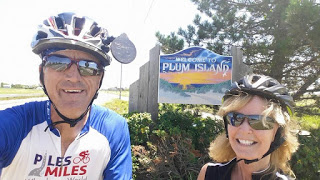
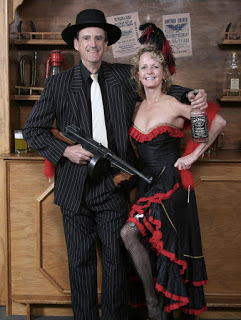
Over five years, through his “Wheels for the World” campaign, Barry racked up over 20,000 miles, criss-crossing the US five times, and generating over $250,000 for the charity I founded, Save One Life. Barry sponsored a child himself and was an avid supporter for the poor in developing countries. Barry was an endurance machine, despite having HIV, and a contracted joint.
Call of the Wild!!
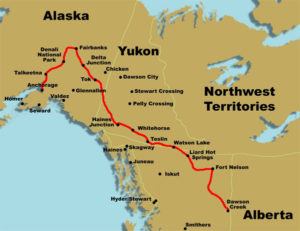 With only five days and 250 miles to go, Barry Haarde is entering the final stretch of his Wheels for the World bike tour to raise funds for Save One Life.
With only five days and 250 miles to go, Barry Haarde is entering the final stretch of his Wheels for the World bike tour to raise funds for Save One Life.
Barry, an avid cyclist with hemophilia, is completing the last leg of a 1,000 mile trek on the Alaska Highway. At the 500-mile mark of his original 2,000 mile route, he collided with another cyclist (who ended up going home with a broken pelvis) and Barry has been showing his true grit through bumps, bruises, a very sore back and lots of factor infusions to stay the course. Given his accident, 1,000 miles alone will be a major achievement!
Dubbed “Call of the Wild,” this is Barry’s sixth long-distance bicycle tour. Call of the Wild started in Dawson Creek, British Columbia and is ending in Anchorage, Alaska. His first five tours totaled 19,000 miles and raised over $200,000 for Save One Life!
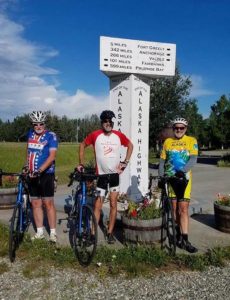 What’s remarkable about this achievement is that Barry has hemophilia, HIV and a contracted knee joint… health issues that would stop most people from considering this audacious ride. But Barry is not most people…he’s driven by memories of the brother and brother-in-law he lost to hemophilia and HIV, and all the friends in the community lost to HIV. In addition, he knows firsthand the pain suffered by those in developing countries who often lack access to blood-clotting medicine.
What’s remarkable about this achievement is that Barry has hemophilia, HIV and a contracted knee joint… health issues that would stop most people from considering this audacious ride. But Barry is not most people…he’s driven by memories of the brother and brother-in-law he lost to hemophilia and HIV, and all the friends in the community lost to HIV. In addition, he knows firsthand the pain suffered by those in developing countries who often lack access to blood-clotting medicine.
Save One Life is an international nonprofit that provides direct support for families with bleeding disorders in developing countries. Save One Life offers families individual sponsorships, college and vocational school scholarships, and micro-enterprise grants. I founded Save One Life in 2001 to engage families who have access to blood-clotting medicine and great medical care to assist families with bleeding disorders who need our help. Many survive on only $1 a day. Save One Life currently provides sponsorships to 1,323 individuals in 12 countries, through over 450 sponsors. Barry is one of them!
Only $3,000 more is needed to reach Barry’s fundraising goal of $35,000. Donate today at Save One Life. And consider sponsoring a child in need.
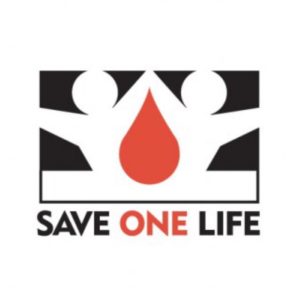 Thank you, Barry!
Thank you, Barry!
Follow Barry’s journey on Facebook here!
To Market, To Market
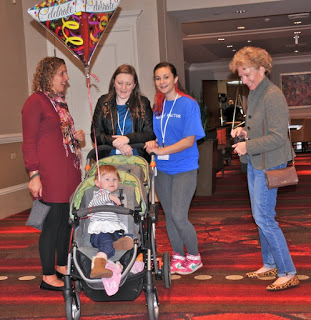 At last! I am not traveling, and I have time to attend the
At last! I am not traveling, and I have time to attend thehemophilia events in my own back yard. This one is Fall Fest, New England Hemophilia
Association’s biannual event. Held in charming Providence, Rhode Island,
we had about 100 people attending to hear speakers like Barry Haarde, who rode
a bike across the US four times; Dawn Rotellini of NHF; and Perry Parker, golf
pro. I consider all these speakers not only interesting, but also friends!
family reunion, to be surrounded by so many friends and families, some of whom
I’ve
known for 15 or 20 years.
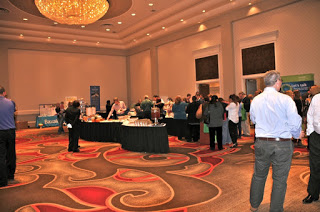 The general session opened the day, with guest speaker Dr.
The general session opened the day, with guest speaker Dr.Kapil Saxena, Director, Global Clinical Leader, Global Clinical Development,
Hematology, of Bayer Corporation, formerly a pediatric hematologist with
the Boston Hemophilia Treatment Center. He spoke about how a drug like factor
is brought to market. It was excellent and informative, and stunning. Some
highlights:
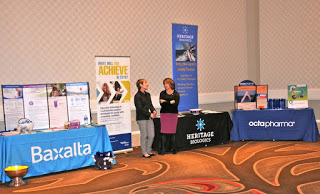 Every drug on the market starts as one of almost 10,000 compounds.
Every drug on the market starts as one of almost 10,000 compounds.Which one has a chance to be brought to market one day? The Drug discovery journey sorts through
those 10,000 compounds, to narrow the field to 259 compounds (this can take up
to 6 years). These are furthered narrowed to 5 compounds (another 6 years!),
which then are brought to the FDA for review. When approved, they go into
clinical studies, which can last up to 1.5 years. Altogether, a drug like
factor can take almost 14 years to get to the market.
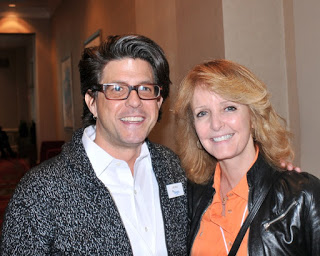 |
| Laurie Kelley with Lee Hall, CoRe Manager and person with hemophilia |
four stages, and some get killed off in the first stage, Phase I, for safety
reasons. Phase II examines efficacy and safety. Phase III, if it makes it that
far, involves a large number of patients, from 1,000-3,000 (although that can’t
possibly be true for hemophilia). More data is gathered over many clinical
centers. For hemophilia, these involve sites now in India, Egypt, China and
more. After the drug is brought to market, Phase IV looks for any more
problems, now that the drug is in widespread use.
the patents expired on factor VIII, IX and FVII molecules, our R&D and
production pipelines are filled with new products. Pharmaceutical companies are
banking on selling these, and yet the marketplace is getting crowded. Dr.
Saxena’s
talk really made us think about the extraordinary effort—and cost–that goes
into making any one hemophilia product. On the one hand, these are among the
most scrutinized products on earth, and that’s great. On the other, how will the
market sustain all these great products?
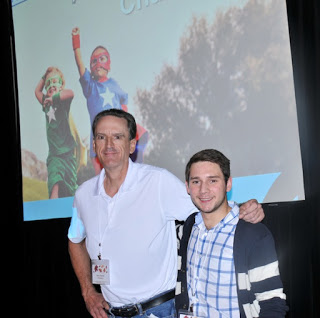 |
| Barry Haarde and Christian Mund |
now.
starring—I
mean featuring Barry Haarde! Of course, Barry is pretty much a celebrity by now
in this community for his heroic rides across America. Six weeks after completing
a 108 mile ride in one day, I still am having severe shoulder pain. Barry does
that in a day, and then goes out and does another 100, then another, then
another…
he’s
Superman! He and Christian Mund, a young man with hemophilia, spoke on setting
goals, making dreams come true. Christian lives right near me and I’ve
known him since he was 12. And he went his first 12 years without being
involved in the community at all. Why? Life was good; there was factor, prophy,
and no need! But as he got involved, he enjoyed the rich relationships and
friends he made. He went through Bayer’s Leadership program, and landed an
excellent job at a marketing firm in Boston! Way to go!
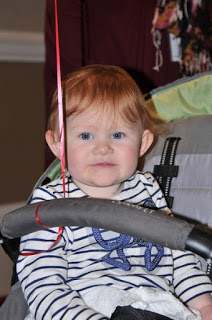 Barry shared his story about how he got involved too. Barry went
Barry shared his story about how he got involved too. Barry wentmost of his adult life without being involved. Shielding his HIV/hep C positive
status from everyone kept him from making connections. But he eventually joined
our community when his brother passed away. And boy did Barry join it! No one
in the US can compete with Barry on the cycling front. He’s
made history at this point, and raised about $170,000 for my nonprofit Save One
Life. But his message was simple: find what you can do and love to do. You’ll
never know where it will lead.
from Biogen, and also community members: Lee Hall, person with hemophilia, and
Lisa Schmidt, former program manager for NEHA. It was inspiring and fun. I’m
not going to give away their presentation, because… you should go
yourself! I give presentations, and know all the tricks and topics, been doing this
for 25 years. But I learned a few really wonderful things at this presentation.
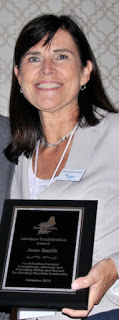 |
| Jane Smith with her Volunteer Award |
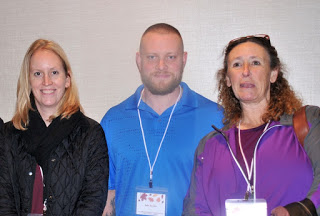 |
| Heather Case of NEHA, John Bruno and Maryann May |
 |
| The lovely ladies of NEHA! |
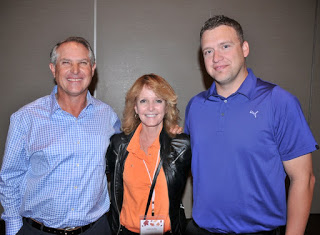 |
| Laurie Kelley dwarfed by golfer Perry Parker and baseball player Jesse Schrader, who both have hemophilia! |
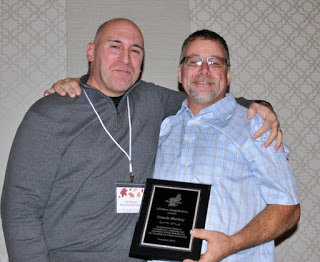 |
| Patrick Mancini, NEHA president, presents Dennis Mackey with an award |
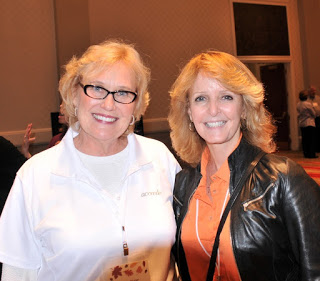 |
| Laurie with Leslie Oygar, RN, who she wrote to 26 years ago and now just met! |
Good Book I Just Read
 This autobiography by the founder and lead singer of the band Godsmack is not technically a great read, but it’s raw and real. The first full 60% of the book is a detailed catalog of Sully’s scrappy and difficult childhood, growing up poor in Lawrence, Massachusetts, with street fighting, crime and later on, drugs and alcohol. His breezy writing style is actually sweet, and bittersweet. You wonder how he ever escaped the beatings (received and doled out), the heartbreaks. Music was his driving force, his salvation. When he gets to the bands, and the formation of Godsmack, it all tied in. His survival skills gave him what he needed to take the huge risk to break out on his own, and become a frontman and founder of a great band, and a great sound. The book ends with his advice to all those with dreams and broken hearts to never give up, no matter what you have to go through. A quick, two-hour read, and I really enjoyed it and love the band’s music. Two/five stars.
This autobiography by the founder and lead singer of the band Godsmack is not technically a great read, but it’s raw and real. The first full 60% of the book is a detailed catalog of Sully’s scrappy and difficult childhood, growing up poor in Lawrence, Massachusetts, with street fighting, crime and later on, drugs and alcohol. His breezy writing style is actually sweet, and bittersweet. You wonder how he ever escaped the beatings (received and doled out), the heartbreaks. Music was his driving force, his salvation. When he gets to the bands, and the formation of Godsmack, it all tied in. His survival skills gave him what he needed to take the huge risk to break out on his own, and become a frontman and founder of a great band, and a great sound. The book ends with his advice to all those with dreams and broken hearts to never give up, no matter what you have to go through. A quick, two-hour read, and I really enjoyed it and love the band’s music. Two/five stars.Haarde to Ride!
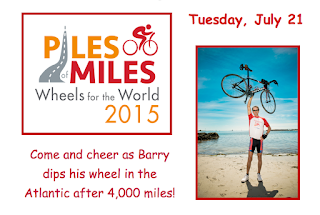 Or not hard to ride… after all, this is Barry’s fourth trip across country on a bicycle! He makes it look so easy. 100 miles a day? Not a problem. I’m lucky if I do that three times in a summer!
Or not hard to ride… after all, this is Barry’s fourth trip across country on a bicycle! He makes it look so easy. 100 miles a day? Not a problem. I’m lucky if I do that three times in a summer!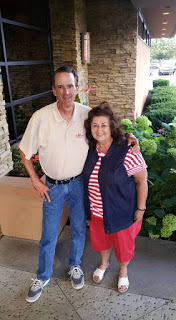 If you haven’t gotten involved, now’s the time. Wheels for the World: Barry is performing this astounding feat as a fundraiser for Save One Life. Moved by the plight of children suffering without factor in developing countries, Barry has sacrificed time off from work, and his own comfort (though I think he kind of enjoys this crazy, punishing route) to bring awareness to these children, and to raise funds for our core mission work.
If you haven’t gotten involved, now’s the time. Wheels for the World: Barry is performing this astounding feat as a fundraiser for Save One Life. Moved by the plight of children suffering without factor in developing countries, Barry has sacrificed time off from work, and his own comfort (though I think he kind of enjoys this crazy, punishing route) to bring awareness to these children, and to raise funds for our core mission work.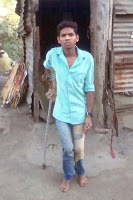 Barry hopes you will consider sponsoring a child, just as he sponsors Mukesh. We have 70 children waiting!! To sponsor, click here: Save One Life
Barry hopes you will consider sponsoring a child, just as he sponsors Mukesh. We have 70 children waiting!! To sponsor, click here: Save One Life 
